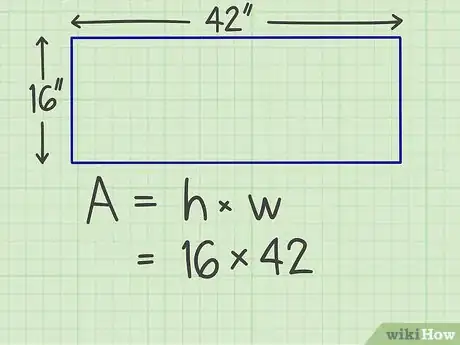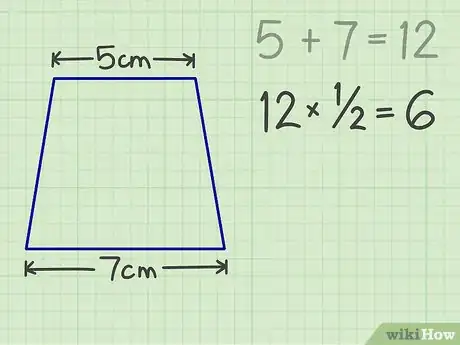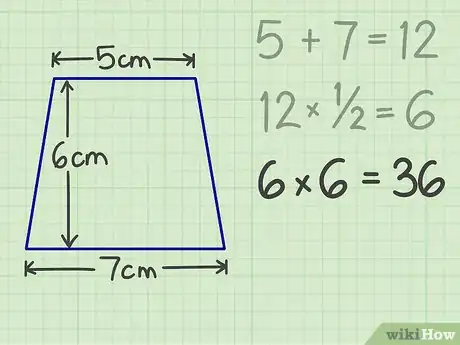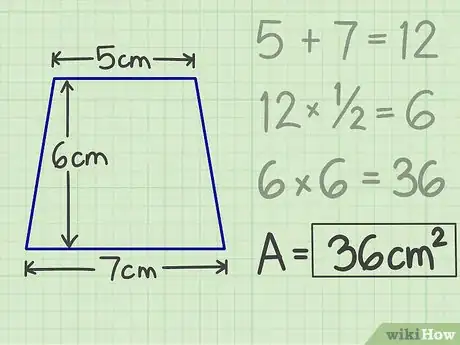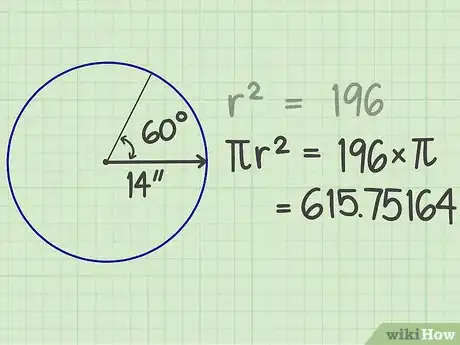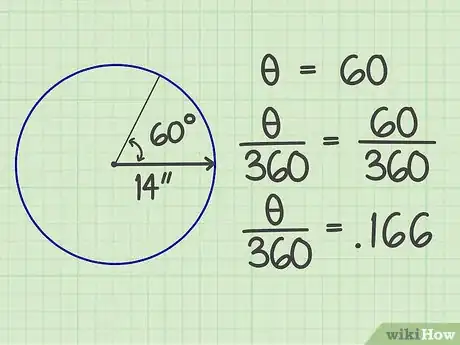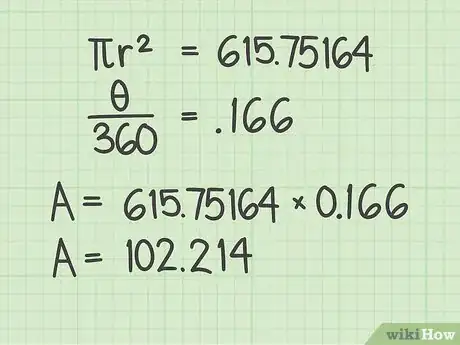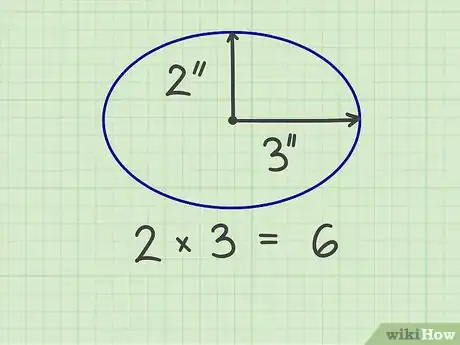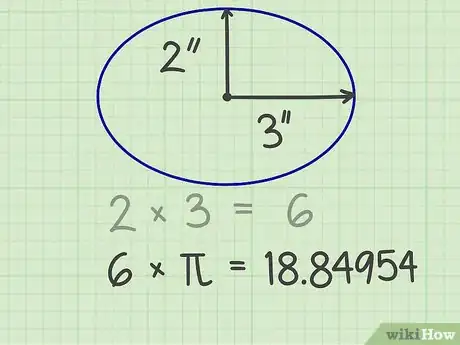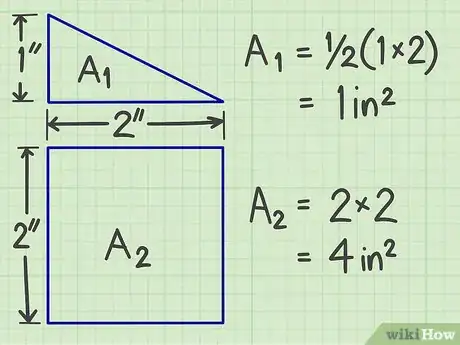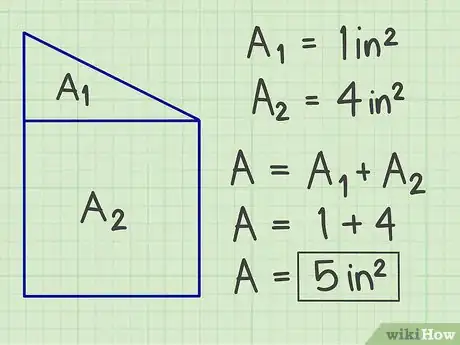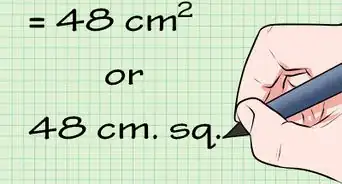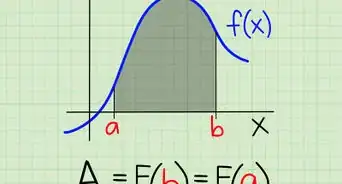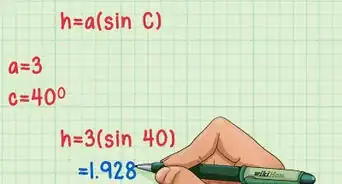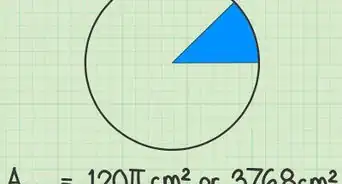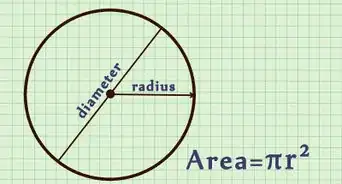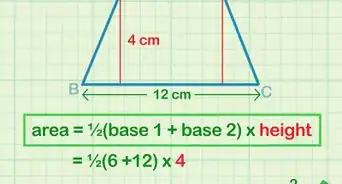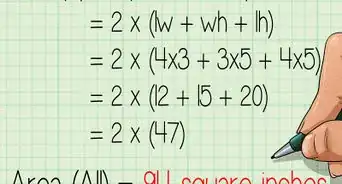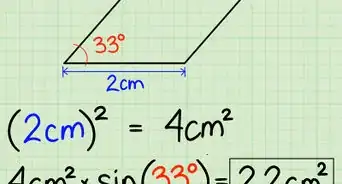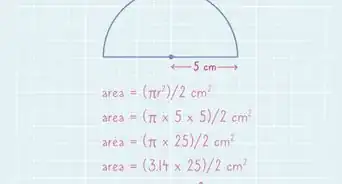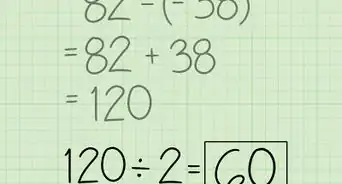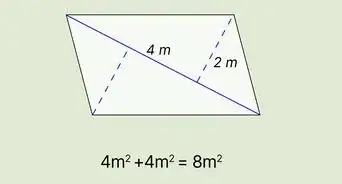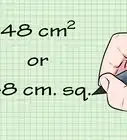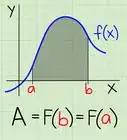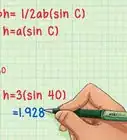This article was co-authored by David Jia. David Jia is an Academic Tutor and the Founder of LA Math Tutoring, a private tutoring company based in Los Angeles, California. With over 10 years of teaching experience, David works with students of all ages and grades in various subjects, as well as college admissions counseling and test preparation for the SAT, ACT, ISEE, and more. After attaining a perfect 800 math score and a 690 English score on the SAT, David was awarded the Dickinson Scholarship from the University of Miami, where he graduated with a Bachelor’s degree in Business Administration. Additionally, David has worked as an instructor for online videos for textbook companies such as Larson Texts, Big Ideas Learning, and Big Ideas Math.
There are 18 references cited in this article, which can be found at the bottom of the page.
This article has been viewed 447,532 times.
There are many different shapes and many reasons why you might want to know their area! Whether you're doing your homework or trying to figure out how much paint you'll need to refurbish that living room, wikiHow has your back! Just get started with Step 1 below to learn how to calculate the area of a shape.
Steps
Squares, Rectangles, and Parallelograms
-
1Measure the width and height. You'll need to start by finding the width and height of the shape (in other words, by finding the measure of two adjoining sides).[1]
- For a parallelogram, you'll need to use what are called the base and vertical height, but these are the same idea as width and height.
- In the real world, you'll have to measure for yourself but for your homework your teacher should have these measurements listed with the shape.
-
2Multiply the sides. Multiply the sides by each other.[2] For example, if you have a rectangle with a height of 16 in and a width of 42 in, you'll need to multiply 16 x 42.[3]
- If you're calculating the area of a square you can actually save yourself some time when using a calculator and just square the side. So, if the side is 4 ft, click 4 and then the square button on your calculator to get the answer. Squaring automatically multiples the number by itself.
Advertisement -
3Get your result. The resulting number from the multiplication is the area of your shape, which is written as "square units". So the area for our rectangle would be 672 square inches.
- This is also sometimes referred to as inches square or written with a small 2 above the text line instead of the word "square".
Trapezoid
-
1Take your measurements. You'll need the measurement of the base, the top, and the vertical height. The base and top are the two parallel sides, while the height will be taken on one of the sides with the angle.[4]
- In the real world, you'll have to measure for yourself but for your homework your teacher should have these measurements listed with the shape.
-
2Add the top and base measurements.[5] Let's say ours has a top that's 5cm and a base that's 7cm. That gives us a value of 12.
-
3Multiply that value by 1/2.[6] That gives us a value of 6.
-
4Multiply that value by the height. For our trapezoid, let's say that that's 6cm. That gives us a value of 36.[7]
-
5Get your result. The resulting number after you multiply the height is the area of the trapezoid. So for our 5x6x7 trapezoid, the area is 36 square cm.
Circles
-
1Find the radius. In order to find the area of a circle, you'll need to know the radius. This is the measurement of the distance between the center of the circle and the outside edge. You can also find this by taking the diameter, or the measurement of the width of the circle, and dividing it in half.[8]
- In the real world, you'll have to measure for yourself but for your homework your teacher should have these measurements listed with the shape.
-
2Square the radius. Multiply the radius times itself. Let's say we have a radius that is 8 feet. That gives us a value of 64.
-
3Multiply by pi. Pi (π) is a really big number that is used in lots of calculations. If you're using a calculator, use the pi function for a really accurate result. If not, you can round pi (ignore some of the numbers) and just multiply by 3.14159. This gives us a value of 201.06176.[9]
-
4Get your result. The resulting number, 201.06176 in our case, is the area of the circle. So we get a result of 201.06176 square feet.
Sectors
-
1Take your measurements. Sectors are portions of a circle, that come out looking a bit like fans. You'll need to know the radius of the original circle, or one side of your "fan", as well as the angle of the point. For us, let's say we have a radius of 14 inches and an angle of 60.[10]
- In the real world, you'll have to measure for yourself but for your homework your teacher should have these measurements listed with the shape.
-
2Square the radius. Multiply the radius times itself. This gives us a value of 196 (14x14).
-
3Multiply by pi. Pi (π) is a really big number that is used in lots of calculations. If you're using a calculator, use the pi function for a really accurate result. If not, you can round pi (ignore some of the numbers) and just multiply by 3.14159. That gives us a value of 615.75164.[11]
-
4Divide the angle by 360. Now, you'll need to take the angle of the point and divide that number by 360 (which is the number of degrees in a circle). For us, we get a value of roughly .166. It's technically a repeating number, but we're going to round to make the math easier.[12]
-
5Multiply the resulting number by the number you got earlier. Multiply the number you get when you divide by 360 by the number you got earlier after you multiply by pi.[13] For us, this gives a result of about 102.214.
-
6Get your result. This resulting number is the area of your sector, making our sector 102.214 square inches.
Ellipses
-
1Get your measurements. To get the area of an ellipse, you'll need to know the two "radio", which you can think of as the width and the height each divided in half. These are the measurements from the center to the middle of the long side and from the center to the middle of the short side. The measurement lines should form a right angle.
- In the real world, you'll have to measure for yourself but for your homework your teacher should have these measurements listed with the shape.
-
2
-
3Multiply that number by pi.[16] Pi (π) is a really big number that is used in lots of calculations. If you're using a calculator, use the pi function for a really accurate result.[17] If not, you can round pi (ignore some of the numbers) and just multiply by 3.14159. That gives us a value of 18.84954.
-
4Get your result. That resulting number is the area of your ellipse. For us, that means our ellipse is 18.84954 square inches.
Triangle
-
1Find your measurements. You'll need to know the base measurement of the triangle as well as the height. The base can be any side of the triangle, as long as you can also measure the height. Let's say that we have a triangle with a base of 3 meters and a height of 1 meter.[18]
- In the real world you'll have to measure for yourself but for your homework your teacher should have these measurements listed with the shape.
-
2Multiply the base by the height. For us, this gives a value of 3 (3x1).[19]
-
3Multiply that value by 1/2.[20] This gives us a value of 1.5.
-
4Get your result. That resulting value is the area of the triangle. So we get a result of 1.5 square meters.
Complex Shapes
-
1Break the shape down into sections. You'll have to start finding the area for complex shapes by breaking the shape down into geometric shapes, like those discussed above. On homework assignments, it will probably be pretty clear cut what those shapes should be, but in the real world, you might need to break an area up into a lot of shapes in order to get really accurate.[21]
- A good place to start is by looking for right angles and parallel lines. These serve as the basis of many shapes.
-
2Calculate the area of the separate shapes. Use the instructions above to find the area of the different shapes you find.[22]
-
3Add the shapes together. Add the resulting areas together in order to get the total area for your shape.[23]
-
4Use alternative methods. There are other tricks you can try too, depending on the shape. You can also try adding imaginary space in order to make the shape a standard geometric shape, and then subtracting the area of that imaginary space after you get your result, for example.
Community Q&A
-
QuestionHow can I find the square inches of a triangle with a base of 15 inches and the height of 8 inches?
 DonaganTop AnswererA triangle's area is equal to one-half its base multiplied by its height. A = (15)(8) ÷ 2 = 60 sq in.
DonaganTop AnswererA triangle's area is equal to one-half its base multiplied by its height. A = (15)(8) ÷ 2 = 60 sq in. -
QuestionA hexagonal prism is 13 cm long and has a volume of 370.5 cm squared. What would be area of the front side?
 DonaganTop AnswererDivide the volume by the length to get the cross-sectional area. Assuming this is a regular hexagon, use the area formula to solve for the width of a side: A = (0.385)(s²). Multiply the side width thus calculated by the length of the prism. That gives you the area of one side.
DonaganTop AnswererDivide the volume by the length to get the cross-sectional area. Assuming this is a regular hexagon, use the area formula to solve for the width of a side: A = (0.385)(s²). Multiply the side width thus calculated by the length of the prism. That gives you the area of one side. -
QuestionHow can I calculate the area of a parallelogram with a base of 12cm, height of 5 cm, and the inside is 4 cm?
 DonaganTop AnswererThe area of a parallelogram is the base multiplied by the height.
DonaganTop AnswererThe area of a parallelogram is the base multiplied by the height.
Warnings
- Make sure that you keep your units of measurement straight. You don't want to mix up numbers!⧼thumbs_response⧽
- It's a good idea to double check your answer!⧼thumbs_response⧽
References
- ↑ https://www.mathsisfun.com/geometry/rectangle.html
- ↑ David Jia. Academic Tutor. Expert Interview. 7 January 2021.
- ↑ https://www.mathsisfun.com/geometry/square.html
- ↑ https://www.khanacademy.org/math/basic-geo/basic-geo-area-and-perimeter/area-trap-composite/v/area-of-a-trapezoid-1
- ↑ https://www.cuemath.com/measurement/area-of-trapezoid/
- ↑ https://www.cuemath.com/measurement/area-of-trapezoid/
- ↑ https://www.mathgoodies.com/lessons/vol1/area_trapezoid
- ↑ https://www.khanacademy.org/math/basic-geo/basic-geo-area-and-perimeter/area-circumference-circle/v/area-of-a-circle
- ↑ https://www.mathsisfun.com/geometry/circle-area-by-sectors.html
- ↑ https://www.khanacademy.org/math/geometry/hs-geo-circles/hs-geo-sectors/v/area-of-a-sector-given-a-central-angle
- ↑ https://www.mathopenref.com/arcsectorarea.html
- ↑ https://www.cuemath.com/measurement/area-of-a-sector/
- ↑ https://www.cuemath.com/measurement/area-of-a-sector/
- ↑ https://math.hmc.edu/funfacts/area-of-an-ellipse/
- ↑ David Jia. Academic Tutor. Expert Interview. 7 January 2021.
- ↑ https://math.hmc.edu/funfacts/area-of-an-ellipse/
- ↑ David Jia. Academic Tutor. Expert Interview. 7 January 2021.
- ↑ https://www.khanacademy.org/math/basic-geo/basic-geo-area-and-perimeter/area-triangle/a/area-of-triangle
- ↑ https://www.khanacademy.org/math/basic-geo/basic-geo-area-and-perimeter/area-triangle/v/example-finding-area-of-triangle
- ↑ https://www.cuemath.com/measurement/area-of-triangle/
- ↑ https://www.khanacademy.org/math/basic-geo/basic-geo-area-and-perimeter/area-trap-composite/v/area-breaking-up-shape
- ↑ https://www.cuemath.com/measurement/area-of-composite-shapes/
- ↑ https://www.cuemath.com/measurement/area-of-composite-shapes/
- https://www.mathsisfun.com/area.html
About This Article
To find the area of a square or rectangle, just multiply the width of the shape by its height. To find the area of a circle, start by measuring the distance between the middle of the circle to the edge, which will give you the radius. Then, square the radius and multiply it by pi to find the area. If you need to find the area of a triangle, multiply the base of the triangle by its height. To find the area of a trapezoid, add the top and bottom of the shape together, divide that number in half, and then multiply by the height. To learn how to find the area of other shapes, such as ellipses or shapes that don't fit one particular category, keep reading!

